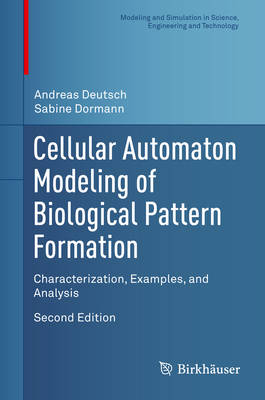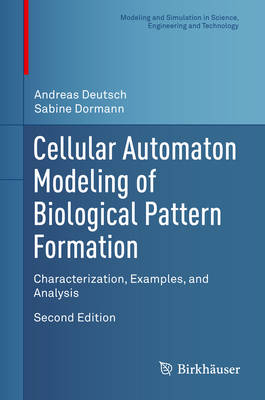
- Retrait gratuit dans votre magasin Club
- 7.000.000 titres dans notre catalogue
- Payer en toute sécurité
- Toujours un magasin près de chez vous
- Retrait gratuit dans votre magasin Club
- 7.000.0000 titres dans notre catalogue
- Payer en toute sécurité
- Toujours un magasin près de chez vous
Cellular Automaton Modeling of Biological Pattern Formation
Characterization, Examples, and Analysis
Andreas Deutsch, Sabine Dormann
89,45 €
+ 178 points
Description
This text explores the use of cellular automata in modeling pattern formation in biological systems. It describes several mathematical modeling approaches utilizing cellular automata that can be used to study the dynamics of interacting cell systems both in simulation and in practice. New in this edition are chapters covering cell migration, tissue development, and cancer dynamics, as well as updated references and new research topic suggestions that reflect the rapid development of the field.
The book begins with an introduction to pattern-forming principles in biology and the various mathematical modeling techniques that can be used to analyze them. Cellular automaton models are then discussed in detail for different types of cellular processes and interactions, including random movement, cell migration, adhesive cell interaction, alignment and cellular swarming, growth processes, pigment cell pattern formation, tissue development, tumor growth and invasion, and Turing-type patterns and excitable media. In the final chapter, the authors critically discuss possibilities and limitations of the cellular automaton approach in modeling various biological applications, along with future research directions. Suggestions for research projects are provided throughout the book to encourage additional engagement with the material, and an accompanying simulator is available for readers to perform their own simulations on several of the models covered in the text. QR codes are included within the text for easy access to the simulator.
With its accessible presentation and interdisciplinary approach, Cellular Automaton Modeling of Biological Pattern Formation is suitable for graduate and advanced undergraduate students in mathematical biology, biological modeling, and biological computing. It will also be a valuable resource for researchers and practitioners in applied mathematics, mathematical biology, computational physics, bioengineering, and computer science. PRAISE FOR THE FIRST EDITION
"An ideal guide for someone with a mathematical or physical background to start exploring biological modelling. Importantly, it will also serve as an excellent guide for experienced modellers to innovate and improve their methodologies for analysing simulation results." --Mathematical Reviews
The book begins with an introduction to pattern-forming principles in biology and the various mathematical modeling techniques that can be used to analyze them. Cellular automaton models are then discussed in detail for different types of cellular processes and interactions, including random movement, cell migration, adhesive cell interaction, alignment and cellular swarming, growth processes, pigment cell pattern formation, tissue development, tumor growth and invasion, and Turing-type patterns and excitable media. In the final chapter, the authors critically discuss possibilities and limitations of the cellular automaton approach in modeling various biological applications, along with future research directions. Suggestions for research projects are provided throughout the book to encourage additional engagement with the material, and an accompanying simulator is available for readers to perform their own simulations on several of the models covered in the text. QR codes are included within the text for easy access to the simulator.
With its accessible presentation and interdisciplinary approach, Cellular Automaton Modeling of Biological Pattern Formation is suitable for graduate and advanced undergraduate students in mathematical biology, biological modeling, and biological computing. It will also be a valuable resource for researchers and practitioners in applied mathematics, mathematical biology, computational physics, bioengineering, and computer science. PRAISE FOR THE FIRST EDITION
"An ideal guide for someone with a mathematical or physical background to start exploring biological modelling. Importantly, it will also serve as an excellent guide for experienced modellers to innovate and improve their methodologies for analysing simulation results." --Mathematical Reviews
Spécifications
Parties prenantes
- Auteur(s) :
- Editeur:
Contenu
- Nombre de pages :
- 464
- Langue:
- Anglais
- Collection :
Caractéristiques
- EAN:
- 9781489979780
- Date de parution :
- 10-03-18
- Format:
- Livre relié
- Format numérique:
- Genaaid
- Dimensions :
- 162 mm x 241 mm
- Poids :
- 825 g

Les avis
Nous publions uniquement les avis qui respectent les conditions requises. Consultez nos conditions pour les avis.






